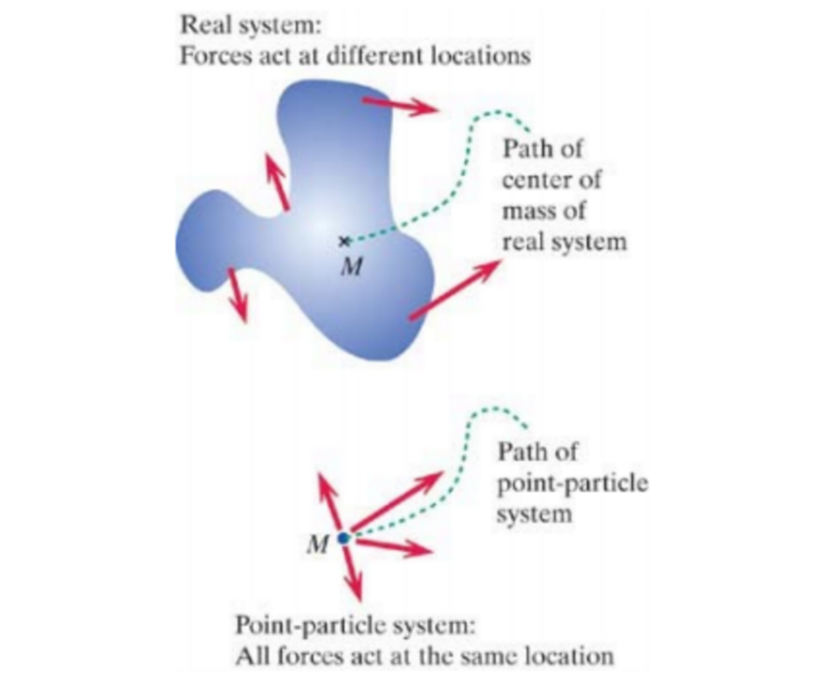Real Systems: Difference between revisions
Nfortingo3 (talk | contribs) |
Nfortingo3 (talk | contribs) |
||
| Line 7: | Line 7: | ||
===A Mathematical Model=== | ===A Mathematical Model=== | ||
What are the mathematical equations that allow us to model this topic. For example <math>{\frac{ | What are the mathematical equations that allow us to model this topic. For example <math>{\frac{delta\vec{W}}{}}_{system} = \vec{W}_{sys}</math> where '''p''' is the momentum of the system and '''F''' is the net force from the surroundings. | ||
The mathematical equations for these types of systems can vary, depending on what his happening within and on the system. However, typically there will always be some form of tranlational kinetic energy becasue the objects, or objects involved will move in some way displacing and conserving energy. The principle that will be used in real systems is the energy principle : | The mathematical equations for these types of systems can vary, depending on what his happening within and on the system. However, typically there will always be some form of tranlational kinetic energy becasue the objects, or objects involved will move in some way displacing and conserving energy. The principle that will be used in real systems is the energy principle : | ||
Revision as of 12:57, 28 November 2015
This topic has been claimed by nfortingo3
The Main Idea
The main idea of this topic is to examine the interactions on the real system and differentiate it from a point particle system.
A Mathematical Model
What are the mathematical equations that allow us to model this topic. For example [math]\displaystyle{ {\frac{delta\vec{W}}{}}_{system} = \vec{W}_{sys} }[/math] where p is the momentum of the system and F is the net force from the surroundings.
The mathematical equations for these types of systems can vary, depending on what his happening within and on the system. However, typically there will always be some form of tranlational kinetic energy becasue the objects, or objects involved will move in some way displacing and conserving energy. The principle that will be used in real systems is the energy principle :
The sum of all the total energies in the system is the sum of the all the external forces(F) over a certain distance(d) within the system(Work). This is know as the Work done on the system. So the energy principles demonstrates that the energy of the system is equal to the work done by the system.
A Computational Model
How do we visualize or predict using this topic. Consider embedding some vpython code here Teach hands-on with GlowScript
Examples
Be sure to show all steps in your solution and include diagrams whenever possible
Simple
Middling
Difficult
Connectedness
- How is this topic connected to something that you are interested in?
- How is it connected to your major?
- Is there an interesting industrial application?
History
Put this idea in historical context. Give the reader the Who, What, When, Where, and Why.
See also
Are there related topics or categories in this wiki resource for the curious reader to explore? How does this topic fit into that context?
Further reading
Books, Articles or other print media on this topic
External links
Internet resources on this topic
References
This section contains the the references you used while writing this page
